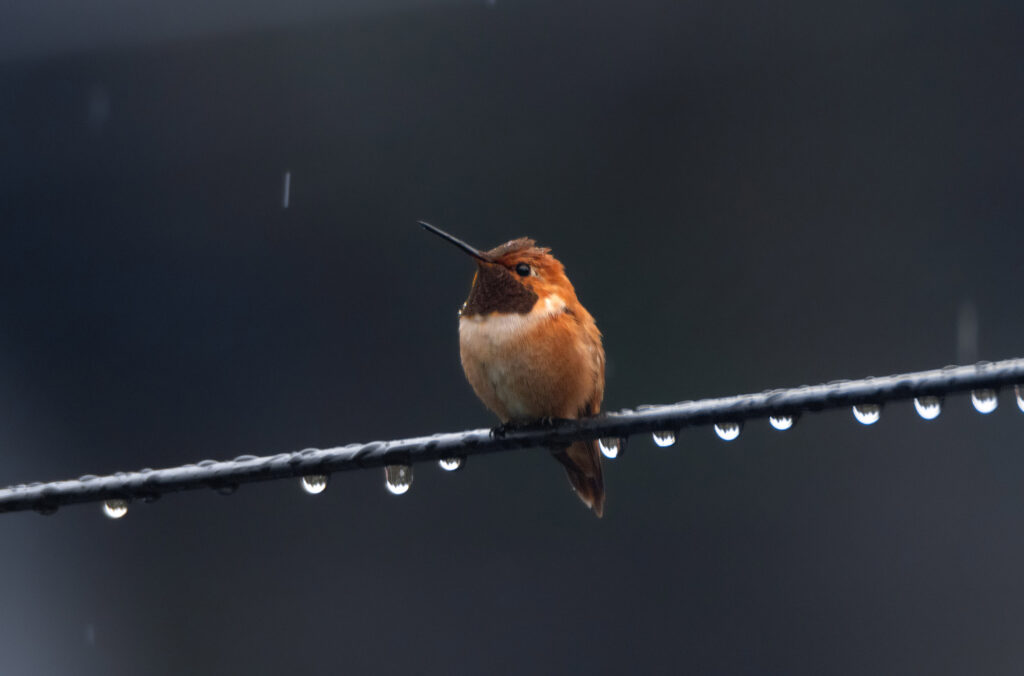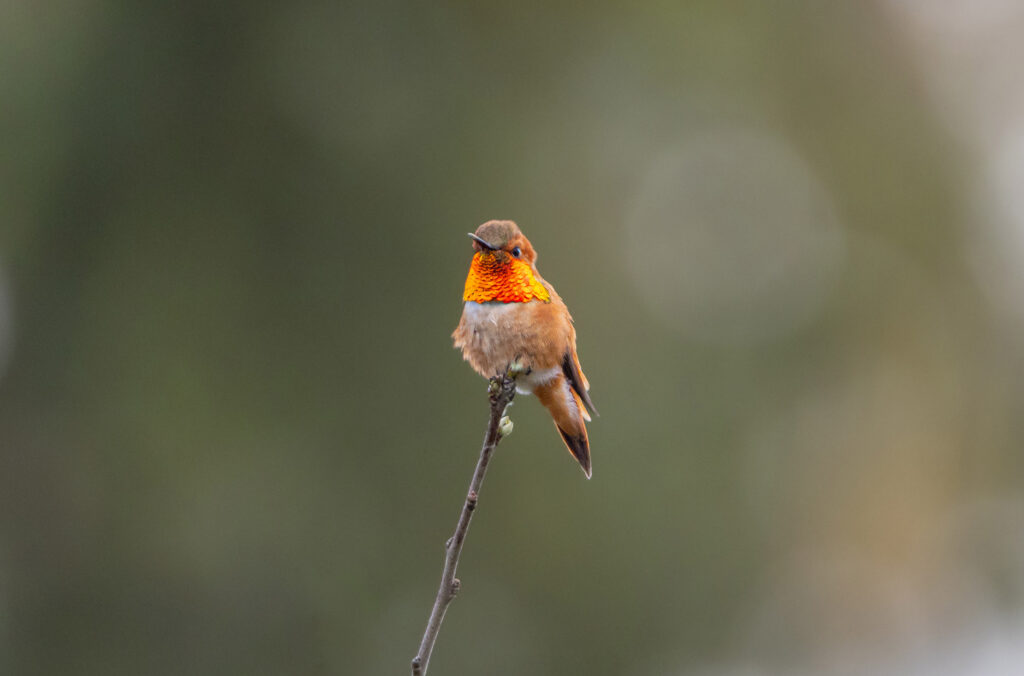As the snow starts to melt and the sun shines over the Pacific Coastline, we are all gearing up for what amazing adventures this summer in Whistler has to offer. This isn’t only an exciting time for us but also for many of the local wildlife, whether they’re waking up from their winter slumbers or passing through on their migration path.
In Whistler, the glorious brightly-coloured males are the first to arrive between late March and early April. This gives them the perfect opportunity to establish their breeding grounds before the females show up.

Three different hummingbird species have been known to live within the Sea to Sky region; the Rufous is the most common. If you are lucky, you might glimpse an Anna’s Hummingbird or the Calliope Hummingbird; more elusive visitors to the area.
Hummingbird Fun Facts
- They may be small but they are feisty! These birds are extremely territorial of their
favourite plants. They have been known to defend their territory no matter the foe,
scaring off much larger animals such as squirrels and chipmunks. - A hummingbird never forgets. They have an incredible memory allowing them to
remember the location of their favourite flowers along their migration path allowing
them to visit year on year. - Bright colours are their favourite. Colours such as red, orange and pink are very
distinguishable to hummingbirds due to their near ultraviolet eyesight. They
associate the colour red with high calorific reward nectar. - Hummingbirds are the only birds that can fly backwards. Their wing
structure allows them to sweep them in a figure-eight pattern giving them the
choice to fly forward, backward or even hover on the spot. - They are fast! Having the ability to fly backwards also allows them to flap their wings
around 80 times per second on average, but during courtship this can be up to 200
beats per second!
Hummingbirds and First Nations Culture
The vibrant hummingbird holds cultural and significant importance to the Squamish and Lil’wat First Nations as a feminine totem representing joy and peace. Depicted in many stories and artworks, the hummingbird is known to be a messenger of joy. If seen before an event they are a sign of good luck, guiding individuals on their journey ahead.
To learn more about Indigenous culture in Whistler, visit the Squamish Lil’wat Cultural Centre.
Where to find a Rufous Hummingbird in Whistler
These beautiful birds are known to breed in second-growth and mature forests, which we
have an abundance of here in the Sea to Sky. During the spring they take advantage of
habitats near water sources; it’s in these locations where the first flowers will bloom.
Our coldest lake, fed by glacial streams, is the perfect habitat for many migratory birds
visiting the area and a known location to see the tiny Rufous Hummingbird. Green Lake is
located north of Whistler Village near Nicklaus North golf course, easily accessible by bus or
along the Valley Trail running throughout Whistler.
Listen out for their distinctive buzzing as they fly from flower to flower, this buzz will also be
accompanied by “chip” sounds.
Later in the fall, before their migration back to Mexico, you will find them in Whistler’s glorious alpine meadows, taking advantage of the blooming wildflowers found in these higher elevations. For you to reach these heights, grab a Summer Alpine Experience Ticket and choose a summer hiking option like the Harmony Meadows Trail on Whistler Mountain.
If you’ve enjoyed learning about one of Whistler’s seasonal visitors, consider joining the Whistler Naturalists‘ monthly bird walk. They run two walks every month, on the 1st Saturday of each month at Alta Lake and the 3rd Saturday at Green Lake.
Look out for the next installment of the Whistler Wildlife Series, when I cover the Hoary Marmot. If you liked this post on birds you might also like Birds of Whistler.
Spring savings are calling! There’s so much to see and do in spring, you’ll want plenty of time for fun in the sun. Extend your stay and book midweek for increased savings, with 3 nights starting from $135 CAD per night.
For summer, book ahead and save up to 25% on lodging. Plus, you'll receive a free $100 CAD Activity Voucher on stays of 3 or more nights ($200 for 5 nights).
Insider Tip: BC or Washington resident? Sign up for Whistler Rewards to access additional savings and exclusive perks.


